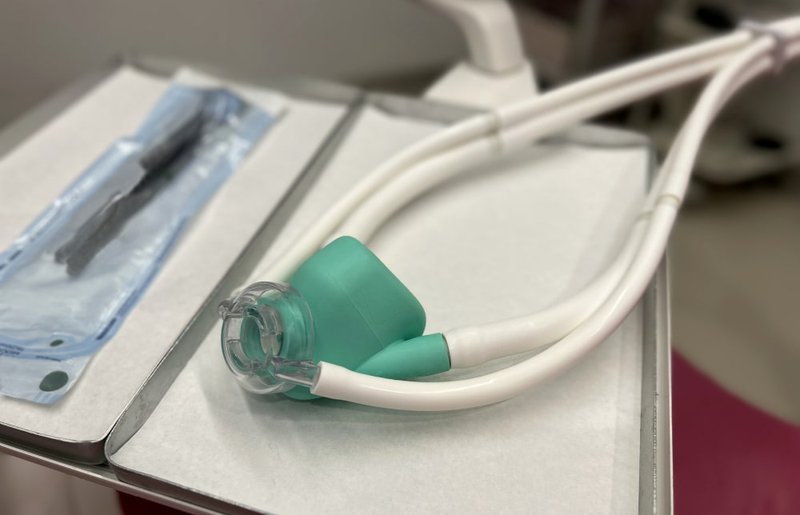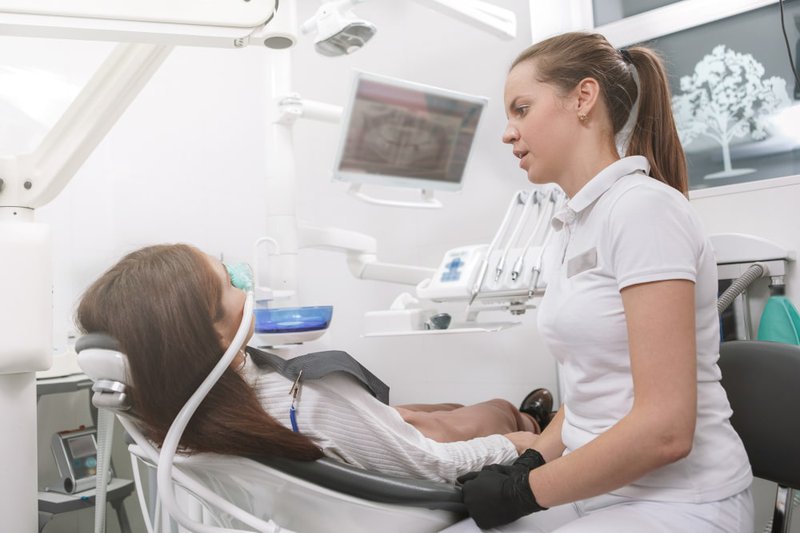
Afraid of the Dentist? Discover the Comfort of Sedation Techniques
Key Takeaways
- Dental anxiety affects up to 20% of Canadians, making sedation dentistry an essential option for many patients.
- Dental anxiety and dental phobia differ: anxiety causes nervousness, while phobia leads to avoidance and severe distress.
- Sedation dentistry offers various options — including nitrous oxide, oral sedation, and IV sedation — tailored to meet patients' individual needs.
- Health Canada and the FDA regulate common oral sedatives, including medications like Diazepam and Lorazepam.
- Sedation dentistry helps patients relax, reduces pain, and enables multiple treatments to be completed in a single visit.
- Safety protocols and personalized care at clinics like Maple Ridge Dentistry ensure sedation is both effective and secure.
- Addressing fears openly and asking the right questions can significantly improve the dental experience for anxious patients.
- Taking small steps, such as consultations and seeking support, can ease the path to overcoming dental fear.
What causes dental anxiety, and how common is it?
Imagine walking into a dental clinic and instantly feeling your heartbeat quicken. You're not alone. Dental anxiety is a prevalent condition, affecting a large portion of adults and children across Canada and the United States. According to the Canadian Dental Association (CDA), approximately 10–20% of Canadians experience significant dental anxiety, with some sources suggesting up to 36% of adults in North America report moderate levels of fear when visiting the dentist.
Psychological Roots of Dental Anxiety
Where does this fear come from? The psychological roots of dental anxiety are often complex and can include:
- Childhood trauma from a painful or frightening dental experience
- Fear of pain, especially if the person has a low pain threshold or has experienced inadequate pain management in the past
- Loss of control or helplessness, especially while lying in the dental chair
- Embarrassment, especially about dental appearance or judgment from dental professionals
- Learned behaviour from parents or peers who express dental fear
How Dental Anxiety Affects Health
The consequences of dental anxiety extend far beyond missed checkups. People with moderate to severe dental anxiety often delay or avoid necessary treatment, which can lead to:
- Tooth decay and gum disease progression
- Increased costs due to the need for more extensive restorative procedures
- Systemic health problems, such as heart disease or diabetes complications
- Mental health strain contributes to heightened stress and shame
Dr. James Ko of Maple Ridge Dentistry notes, "Avoidance due to anxiety can lead to a domino effect — small issues become emergencies. Our role is to help patients feel safe and in control."
What is dental phobia, and how is it different from anxiety?
It's important to distinguish between dental anxiety and dental phobia, although the terms are often used interchangeably.
Definitions and Severity
- Dental Anxiety: A general sense of nervousness or worry before and during dental visits. Symptoms may include restlessness, sweating, or rapid heartbeat, but patients usually manage to attend appointments.
- Dental Phobia: A more intense, irrational fear that causes individuals to avoid the dentist altogether. It may provoke panic attacks, nightmares, or even physical illness at the thought of treatment.
Symptoms to Watch For
Signs that anxiety may be developing into a phobia include:
- Extreme distress at the mention of dental care
- Cancelled appointments or avoidance for years
- Difficulty sleeping before a dental visit
- Feelings of dread or panic when thinking about dental instruments
Comparison Table: Dental Anxiety vs Dental Phobia
| Feature | Dental Anxiety | Dental Phobia |
|---|---|---|
| Intensity | Mild to moderate | Severe and disabling |
| Symptoms | Nervousness, unease | Panic attacks, nausea |
| Behaviour | Attends appointments | Avoid at all costs |
| Treatment | Reassurance, mild sedation | Therapy, advanced sedation |
| Impact | Delays care | Complete avoidance |

How does sedation dentistry work for patients who are anxious?
When anxiety becomes a roadblock to dental care, sedation dentistry can provide a safe and effective solution. It's not about “knocking patients out,” but about helping them feel calm and in control during their procedure.
Types of Sedation
There are several levels of sedation used in dental practices like Maple Ridge Dentistry:
- Nitrous Oxide (Laughing Gas): Inhaled through a mask, offering quick relaxation with minimal side effects. The effects wear off quickly.
- Oral Sedation: Administered via a prescribed pill (usually Halcion or similar benzodiazepines). Helps patients feel drowsy but remain awake.
- IV Sedation: Delivered through a vein for more profound relaxation. Patients may have little memory of the procedure.
Each method varies in depth and duration, allowing for customization based on the patient’s anxiety level and the complexity of the procedure.
How It Helps
Sedation dentistry can:
- Reduce fear and memory of the procedure
- Allow multiple treatments in a single visit
- Improve cooperation for those with extreme fear or special needs
- Minimize physical discomfort by enhancing pain control
Who Qualifies for Sedation Dentistry?
Patients are typically evaluated based on:
- Severity of anxiety or phobia
- Medical history and medications
- Type and length of procedure
At Maple Ridge Dentistry, a comprehensive consultation ensures that safe and appropriate sedation choices are made. Dr. Yara Al Dabbagh emphasizes, "Our goal is to match the right sedation level to the right patient. It's about making care accessible and comfortable."
What types of oral sedation are available at dental clinics?
Oral sedation is among the most commonly chosen options for dental patients experiencing anxiety. It strikes a balance between effectiveness and simplicity — no needles, no gas masks, just a pill.
Common Oral Sedatives
Health Canada and the U.S. Food and Drug Administration (FDA) both regulate the medications used for oral sedation. The most frequently prescribed include:
- Diazepam (Valium): Long-lasting, ideal for night-before anxiety.
- Lorazepam (Ativan): Has a shorter onset and helps induce calm before an appointment.
- Triazolam (Halcion): Rapid onset, widely used in dental procedures.
- Zolpidem (Ambien): Sometimes used for anxiety and sleep-related issues.
Side Effects and Considerations
Most oral sedatives are benzodiazepines, which work by slowing down brain activity. Possible side effects include:
- Drowsiness or grogginess
- Dry mouth
- Mild memory loss (amnesic effect)
- Dizziness or coordination issues
They are not typically recommended for:
- Pregnant individuals
- People with severe respiratory conditions
- Patients with known benzodiazepine allergies

Comparison Chart: Oral Sedatives
| Medication | Onset | Duration | Common Use | Notes |
|---|---|---|---|---|
| Diazepam | 30–60 min | 2–6 hrs | Night-before relief | Long-lasting, possible grogginess |
| Lorazepam | 20–30 min | 4–8 hrs | Day-of calming | Moderate sedation depth |
| Triazolam | 15–30 min | 2–4 hrs | Procedure time sedation | Often chosen for short visits |
| Zolpidem | 30 min | 2–3 hrs | Sleep and relaxation | Less common in dentistry |
What can I expect before, during, and after a sedation dentistry appointment?
Knowing what’s ahead can ease much of the anxiety. Here's a simple breakdown.
Before the Appointment
- Fasting instructions (usually no food 6–8 hours prior)
- Medication review by your dentist
- Transportationis arranged, as you won’t be able to drive yourself
- Consent forms and instructions were given clearly
During the Appointment
- Monitoring begins (blood pressure, oxygen, heart rate)
- Sedative is administered (pill, IV, or mask)
- The procedure takes place while you're relaxed or drowsy
Patients typically feel:
- Deeply relaxed
- Mildly unaware of surroundings
- Sleepy but responsive (except under deeper IV sedation)
After the Appointment
- You’ll be monitored in recovery for 30–60 minutes
- Grogginess or dizziness for a few hours is common
- Avoid work, school, or driving for the rest of the day
- Follow all aftercare instructions, including hydration, rest, and any prescribed meds

What should you ask your dentist if you're afraid of treatment?
Feeling anxious about seeing the dentist? You're not alone — and the right questions can make a stressful appointment more manageable.
Key Questions to Ask
When booking or attending your visit, ask:
- What sedation options do you offer?
- Can I tour the clinic beforehand?
- Please explain each step of the procedure.
- What signs should I give if I need a break?
- Can I bring a support person?
- How do you handle patients with past trauma or phobias?
These questions set the tone for open and honest communication, helping ensure that your provider understands your needs.
How does Maple Ridge Dentistry help patients with dental anxiety?
At Maple Ridge Dentistry, helping anxious patients is more than a service — it’s part of their mission.
Sedation and Comfort Options
- Nitrous oxide, oral, and IV sedation, customized to the patient
- Noise-cancelling headphones and soothing music
- Warm blankets and neck pillows for physical comfort
- Paced appointments, giving patients control over breaks and time
What are the most common myths about sedation dentistry?
There’s no shortage of misinformation when it comes to sedation. Let’s clear the air.
Myth 1: You’ll Be Completely Unconscious
Fact: Most dental sedation (primarily oral or nitrous oxide) keeps you awake but relaxed. Only general anesthesia, rarely used, renders you unconscious.
Myth 2: It’s Not Safe
Fact: According to the Canadian Dental Association, sedation used under proper protocols is highly safe, especially when administered by trained professionals. Monitoring equipment and emergency protocols are standard operating procedures.
Myth 3: It’s Too Expensive
Fact: Mild sedation like nitrous oxide is often affordable, and some insurance plans even cover it. IV sedation may cost more, but it is still accessible for many patients.
Myth 4: You’ll Feel Groggy for Days
Fact: Most patients recover from sedation within a few hours, especially with nitrous or oral sedation. IV sedation may require a day off, but lingering side effects are rare.
What’s the best way to move forward if you’re still afraid of the dentist?
Still unsure? That’s completely okay. The key is to take the next small step, not a giant leap.
Actionable Next Steps
- Start with a consultation — you don’t have to commit to treatment.
- Bring a trusted person to your first visit.
- Download the question checklist and write down your concerns.
- Ask about sedation in advance so you’re prepared.

